Embarking on an African safari is a truly enchanting experience, one that takes you close to nature in its purest form. A safari offers the chance to gaze upon majestic wildlife, experience vibrant local cultures, and soak in the stunningly diverse landscapes that only Africa can offer.
This article aims to guide you through the top 15 safari parks in Africa, each unique and offering its own unforgettable adventure.
Masai Mara National Reserve, Kenya
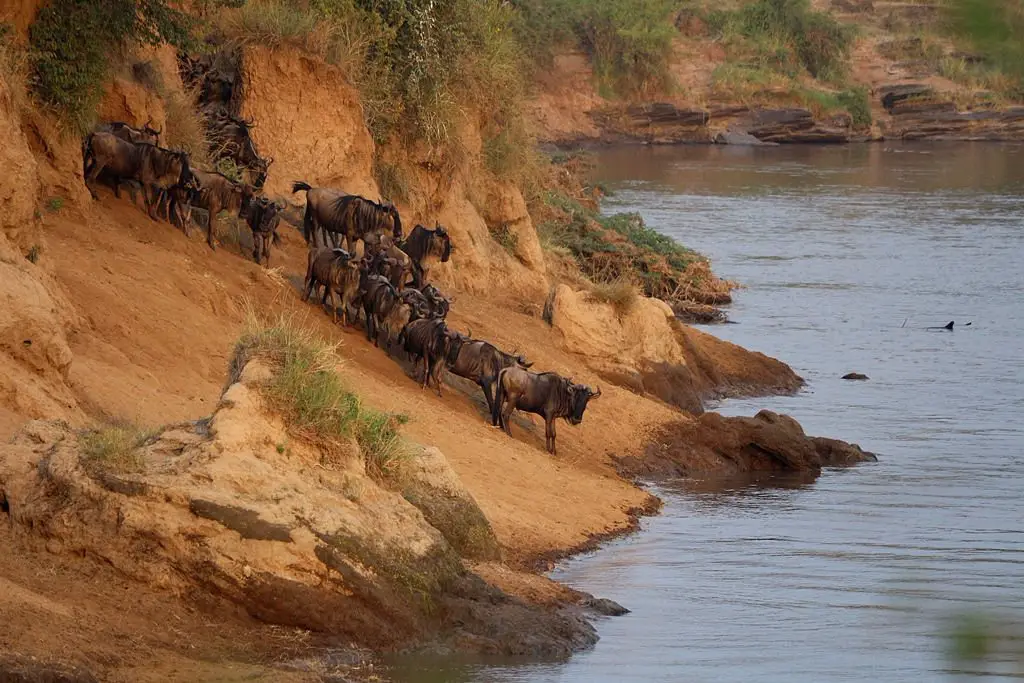
Situated in the southwest of Kenya, covering an area of 1,510 square kilometers, Masai Mara National Reserve is a wildlife haven. Named in honor of the Maasai people, the ancestral inhabitants of the area, and the Mara River that divides it, this reserve is world-renowned for its exceptional wildlife and natural beauty.
Masai Mara is most famous for the Great Migration, an annual event usually occurring between July and October when over a million wildebeest, zebras, and other antelope species migrate from Tanzania’s Serengeti National Park into the Mara in search of fresh pastures. This mass movement of animals is one of nature’s greatest spectacles and a bucket-list experience for many wildlife enthusiasts.
The reserve is home to the “Big Five” (lion, leopard, elephant, buffalo, and rhino), making it an ideal place for wildlife spotting. In addition, it hosts a variety of other species, such as cheetahs, giraffes, hippos, and more than 500 species of birds.
Masai Mara offers a range of accommodations to suit different preferences and budgets. Luxury lodges provide opulent settings, world-class cuisine, and unmatched views of the surrounding landscapes. Tented camps offer a more authentic safari experience, bringing you closer to nature without sacrificing comfort. Budget-friendly camps are also available, offering basic amenities and a genuine wilderness experience.
While Masai Mara is a year-round destination, the best time to visit depends on what you wish to experience. If you want to witness the Great Migration, plan your visit between July and October.
For general wildlife viewing, the dry season, from late June to October, is ideal as animals congregate around water sources. The wet season (November to May) offers beautiful scenery and is the best time for bird watching.
Serengeti National Park, Tanzania
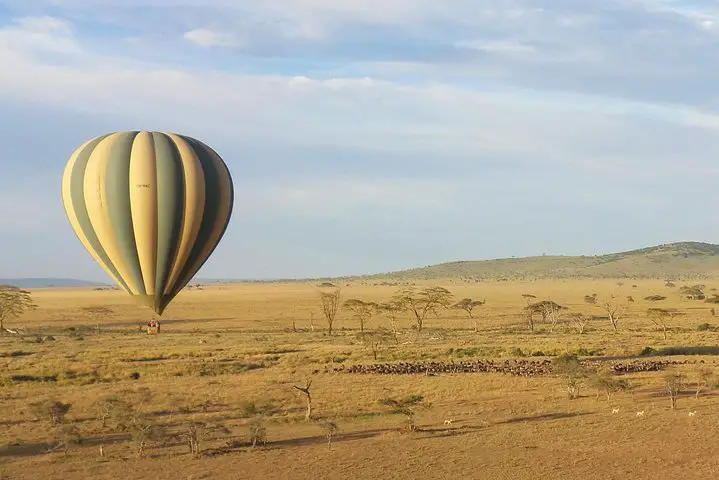
The Serengeti National Park, located in northern Tanzania, is one of the most famous wildlife habitats in the world. Spanning approximately 14,763 square kilometers, the park is a UNESCO World Heritage site, known for its unique ecosystem that has remained unchanged over a million years.
Just like the Masai Mara, the Serengeti is known for the Great Migration, when around 1.5 million wildebeest, zebras, and several species of antelope migrate for fresh pastures. The migration cycle in Serengeti usually starts around November, with wildebeests calving around February, and continues through June before moving toward the Masai Mara.
The Serengeti is home to the “Big Five” – lion, leopard, elephant, buffalo, and rhino. The park boasts a large population of lions and a significant leopard population. It’s also home to cheetahs, giraffes, hyenas, and more than 500 species of birds, including ostriches and bizarre-looking secretary birds.
Accommodation in Serengeti ranges from luxury lodges with stunning views of the plains and abundant wildlife, to tented camps that offer a true bush experience. There are also public campsites for those who wish to be closer to nature. Many accommodations offer game drives, hot air balloon safaris, and cultural interactions with local communities.
While the Serengeti can be visited all year round, the best time for wildlife viewing depends on what you want to see. The best time to witness the Great Migration is from late November to July. However, for predator action, the best time is between June and October when the wildebeest return from the Masai Mara.
Conservation is a cornerstone of the Serengeti National Park’s mission. The park’s management is dedicated to preserving its pristine wilderness and diverse wildlife populations. This includes anti-poaching initiatives and habitat preservation. Tourism plays a vital role in funding these conservation efforts.
Kruger National Park, South Africa
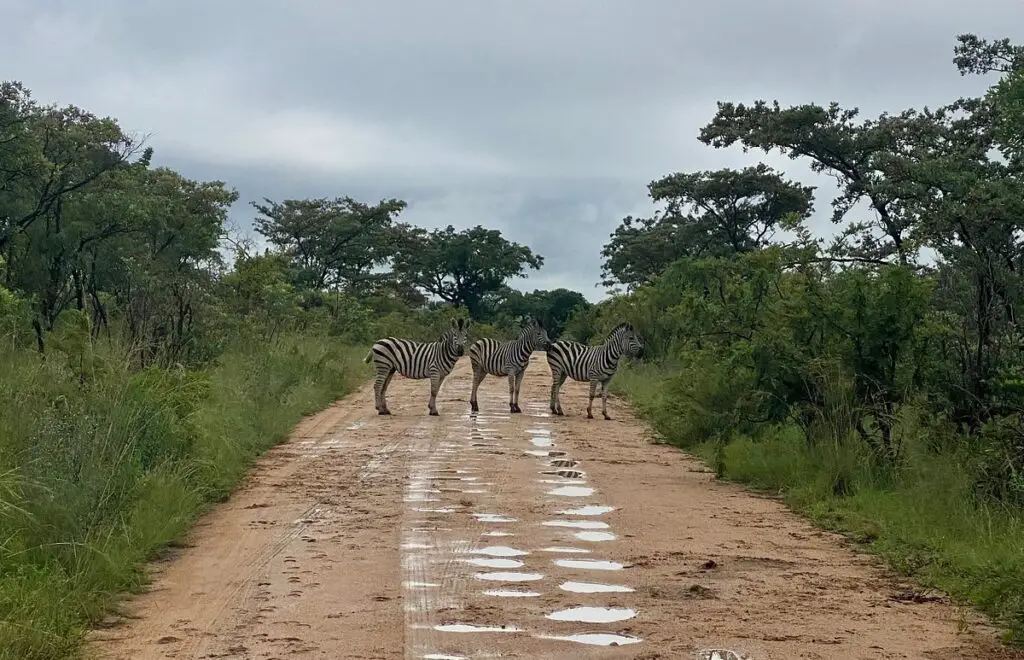
Kruger National Park is one of the most famous safari destinations in Africa. Located in the northeastern part of South Africa and extending over Limpopo and Mpumalanga provinces, the park covers an impressive 19,485 square kilometers, roughly the size of Israel or New Jersey.
Kruger is home to an impressive variety of wildlife, including the “Big Five” (lion, leopard, rhino, elephant, and buffalo). The park is particularly known for its conservation of African elephants, hosting one of the largest elephant populations. It is also home to a diverse range of other animals, like cheetahs, hippos, crocodiles, giraffes, and numerous species of antelope.
Bird watchers will also appreciate Kruger National Park, as it hosts more than 500 bird species, including various eagles, vultures, and storks.
Apart from wildlife viewing, visitors can explore archaeological sites like Masorini and Thulamela, showcasing the rich cultural heritage of the region.
Kruger offers a wide range of accommodation to suit different budgets and preferences. Luxury lodges provide high-end services with stunning views, private pools, and gourmet dining. Various bush lodges and tented camps provide a more authentic safari experience, while numerous public rest camps offer affordable options, often with amenities like restaurants, shops, and fuel stations.
The dry winter months (May to September) are generally the best time for wildlife viewing in Kruger. During this time, the bush thins out, improving visibility, and animals are more frequently found near water sources. However, the wet summer season (October to April) brings lush landscapes and is the best time for birdwatching, as migratory birds are present.
Kruger National Park has a long history of conservation and plays a significant role in biodiversity protection in South Africa. Numerous conservation projects and research initiatives are ongoing, including efforts to combat poaching, particularly of rhinos and elephants. These efforts are supported, in part, by the park’s tourism.
Visiting Kruger National Park offers an unforgettable wildlife experience, combining high biodiversity, excellent infrastructure, and diverse accommodations. It’s a must-visit for any safari lover.
Bwindi Impenetrable National Park, Uganda

Located in southwestern Uganda, Bwindi Impenetrable National Park is a UNESCO World Heritage Site spanning an area of about 331 square kilometers. This verdant, lush park is famous for its ancient, mist-covered forests and incredible biodiversity.
Bwindi is best known for being home to half of the world’s population of endangered mountain gorillas. Trekking to see these magnificent, gentle creatures in their natural habitat is an intimate, moving experience that attracts visitors from around the world. Each gorilla trekking experience helps to support the conservation of these magnificent creatures and their habitat.
In addition to the gorillas, Bwindi hosts other primates such as baboons and chimpanzees. There are also about 120 mammal species in the park, including forest elephants and several types of antelopes. Furthermore, birdwatchers will be delighted by the over 350 bird species found in Bwindi, including 23 that are endemic to the Albertine Rift.
Accommodation in Bwindi ranges from luxury eco-lodges that offer comfortable rooms, high-quality cuisine, and stunning views, to mid-range and budget lodges that offer basic facilities in a natural setting. Many lodges arrange gorilla tracking tours and other activities for guests.
While Bwindi can be visited all year round, the best times are during the dry seasons from June to August and December to February. These periods offer the most comfortable trekking conditions. However, it’s important to note that even during dry seasons, rain is always a possibility in this tropical rainforest, so it’s best to come prepared with rain gear.
The Uganda Wildlife Authority manages Bwindi Impenetrable National Park, undertaking various conservation initiatives to protect and preserve the unique biodiversity of the area. The mountain gorilla is the focus of many of these efforts, which include anti-poaching patrols, veterinary care, and community-based conservation projects. The income from tourism plays a crucial role in these conservation efforts.
Bwindi Impenetrable National Park offers a unique, immersive experience in one of Africa’s most unique landscapes. Whether you’re tracking mountain gorillas or simply soaking in the incredible biodiversity, a visit to Bwindi is sure to be a memorable one.
Hwange National Park, Zimbabwe
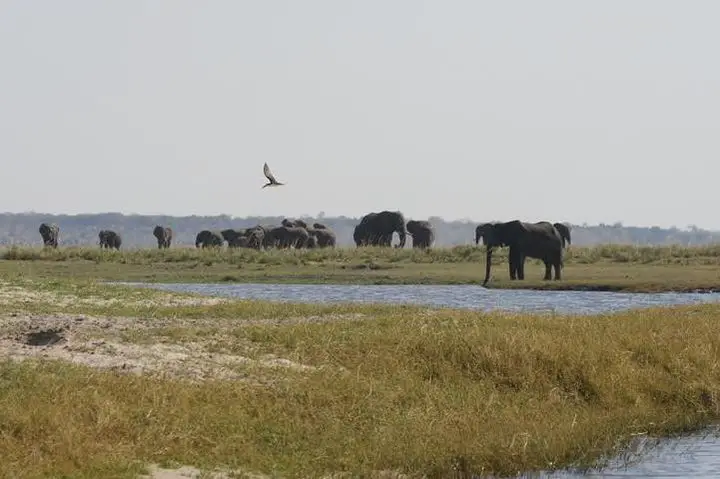
Situated in the northwest corner of Zimbabwe, Hwange National Park is the largest park in the country, spanning roughly 14,650 square kilometers. It’s just a short drive from Victoria Falls, making it an ideal destination for those visiting this world-famous waterfall.
Hwange is renowned for its rich and diverse wildlife. The park is home to over 100 species of mammals, including the “Big Five.” Notably, it hosts one of the largest elephant populations in the world, with numbers often exceeding 30,000. Hwange is also a refuge for African wild dogs, a species endangered throughout Africa.
Bird lovers will be enthralled by the more than 400 species of birds that can be seen in the park, including ostriches, eagles, and a variety of waterfowl.
Hwange is dotted with numerous waterholes, which become bustling hubs of activity during the dry season, offering excellent wildlife viewing opportunities. Game drives and walking safaris are popular activities in the park.
The park provides a range of accommodation options to cater to various budgets and tastes. Visitors can choose from luxury safari lodges that offer all amenities, stunning views, and guided game drives, to self-catering chalets and campsites for a more hands-on wilderness experience.
While Hwange National Park is a year-round destination, the dry season (July to October) is generally considered the best time for wildlife viewing. During these months, animals congregate around the park’s numerous waterholes, making them easier to spot. The wet season (November to April) turns the park into a lush, green landscape and is the best time for bird watching.
The park plays a critical role in conservation within Zimbabwe. The park’s management has implemented various initiatives to protect its wildlife and ecosystems, such as anti-poaching efforts and habitat conservation programs. In particular, they work to secure the future of the park’s elephant and wild dog populations. Tourists visiting Hwange directly support these conservation efforts.
A visit to Hwange National Park offers the chance to experience one of Africa’s pristine wildernesses and witness its commitment to wildlife conservation. Its proximity to Victoria Falls makes it an excellent addition to any Zimbabwean travel itinerary.
Etosha National Park, Namibia
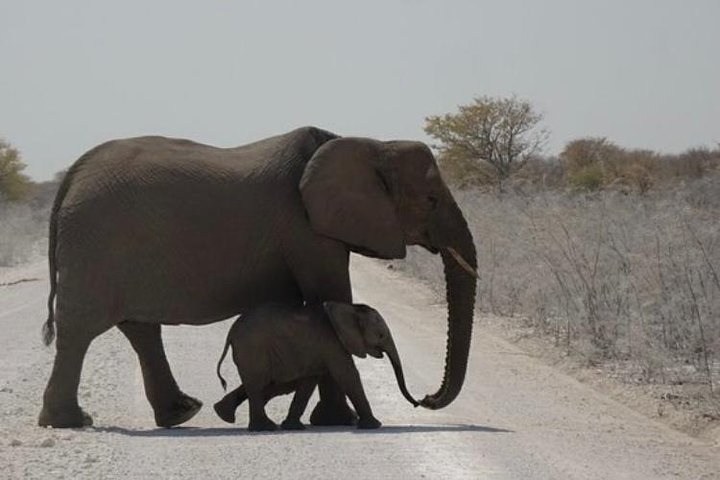
tosha National Park is one of the most accessible game reserves in Namibia and Southern Africa. Spanning an area of about 22,270 square kilometers, Etosha is dominated by the enormous Etosha salt pan, which can even be seen from space. This park offers one of the most unique wildlife experiences in Africa.
Etosha is home to 114 species of mammals, including four of the “Big Five” — elephant, lion, leopard, and rhino (both black and white). The park is especially known for its large population of elephants and the endangered black rhino. Moreover, it hosts numerous species of antelopes, giraffes, zebras, and the elusive cheetah.
The Etosha pan, a vast salt desert visible from space, is the park’s main geological feature and becomes a shimmering mirage during the heat of the day. After a good rain, the pan fills with water, attracting a mass of flamingos and other water birds.
Etosha National Park offers a range of accommodation options, including several government-run rest camps — Namutoni, Halali, and Okaukuejo — which have a range of facilities, including shops, swimming pools, and restaurants. Okaukuejo is particularly famous for its floodlit waterhole, where wildlife can be observed day and night. Several private luxury lodges operate on the borders of the park, offering game drives, guided walks, and other activities.
The dry winter season, from May to October, is the best time for wildlife viewing in Etosha. During these months, the animals congregate around waterholes, providing excellent game viewing opportunities. The wet season (November to April) is less predictable for wildlife spotting but is the best time for bird watching and landscape photography.
The park plays a significant role in conserving Namibia’s unique wildlife. The park has anti-poaching units and has launched various initiatives to protect its ecosystem, including programs aimed at protecting its rhino populations. Tourism to Etosha contributes significantly to these conservation efforts.
Etosha National Park offers an unforgettable wildlife experience, with its vast landscapes, diverse fauna, and the dramatic Etosha pan, it is a must-see for anyone visiting Namibia.
South Luangwa National Park, Zambia
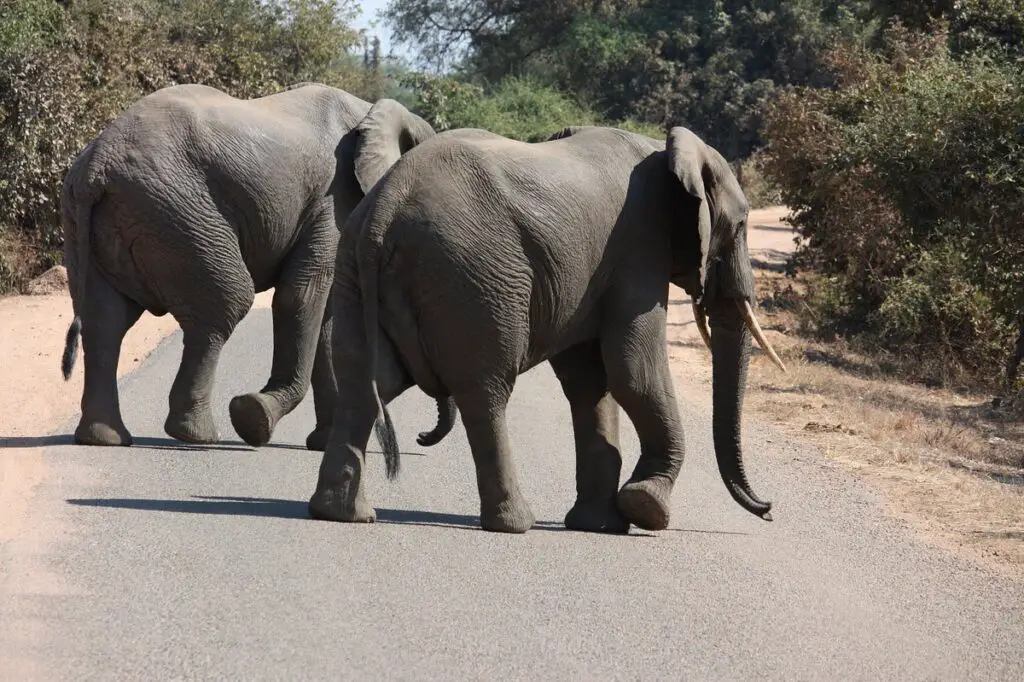
South Luangwa National Park is known for its abundant wildlife. The park hosts 60 different animal species and over 400 bird species. It’s renowned for its high density of leopards and hippos. The Luangwa River supports large populations of crocodiles, and elephants and buffaloes often come to the river’s edge to drink.
The park is also home to a variety of antelope species and is one of the few places in Africa where it’s possible to see the Thornicroft’s giraffe and Cookson’s wildebeest, both endemic to the Luangwa Valley. Night drives are particularly rewarding in South Luangwa, with the opportunity to see nocturnal species such as genets, civets, and bush babies.
South Luangwa offers a variety of accommodations, ranging from luxury lodges to budget-friendly campsites. Many of the lodges and camps are located along the riverbank, offering fantastic views of the wildlife that come to the river. These accommodations often offer guided walking safaris, game drives (both day and night), and bird watching tours.
The best time to visit South Luangwa National Park for wildlife viewing is during the dry season, from May to October. As the water dries up inland, animals congregate around the Luangwa River, providing excellent game viewing opportunities. However, the wet season (November to April) is the best time for bird watching, with many migrant species present.
Conservation is an integral part of South Luangwa National Park’s operations. The park management and various NGOs have implemented several initiatives to combat poaching and maintain the ecosystem’s health. These efforts have been critical in preserving the unique wildlife and the natural beauty of the park.
South Luangwa National Park, with its diverse wildlife, beautiful scenery, and commitment to conservation, offers a spectacular safari experience in the heart of Africa. Its unique features, such as walking safaris and night drives, ensure a memorable experience for every visitor.
Okavango Delta
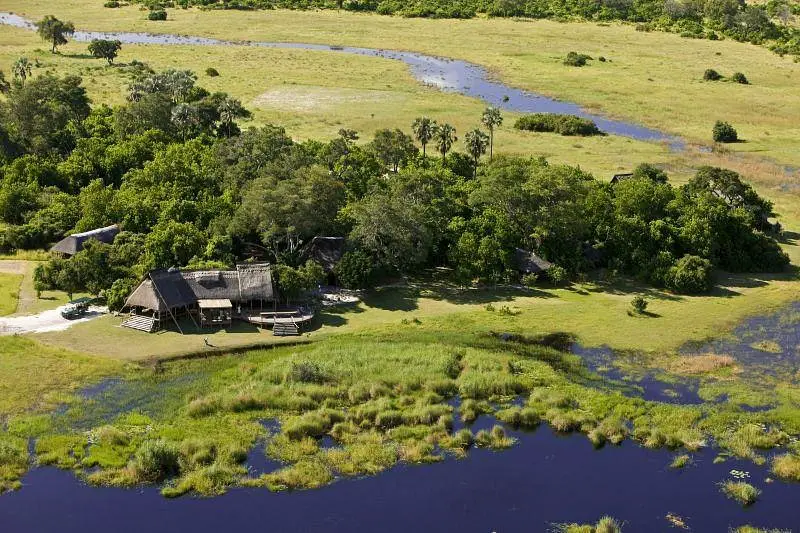
The Okavango Delta is one of Africa’s most incredible natural wonders, an oasis of life in the center of the Kalahari Desert. Covering approximately 15,000 square kilometers, the delta is a labyrinth of lagoons, channels, and islands, creating an ever-changing landscape that supports a diverse range of wildlife.
The Okavango Delta is home to a remarkable variety of wildlife. During the dry season, the delta’s waterways draw large concentrations of animals seeking water, including elephants, buffalos, giraffes, lions, leopards, cheetahs, hyenas, and countless antelope and bird species.
One of the main attractions of the Okavango Delta is the annual flooding, which begins around May or June in the north and slowly trickles down to the drier areas over the following months. This flood brings life back to the delta, transforming the dry plains into a lush, animal-packed oasis.
A key feature of the Okavango Delta experience is the traditional ‘mokoro’ (dugout canoe) rides, which provide a unique and quiet way to explore the delta’s waterways and observe wildlife from a different perspective.
The Okavango Delta offers a range of accommodation options, largely centered on luxury safari lodges and camps. These typically provide all-inclusive packages covering meals, game drives, and other activities. Some lodges also offer “fly-in” safaris, where guests are flown into the delta from Maun or Kasane.
The best time to visit the Okavango Delta depends on what you want to see. For general wildlife viewing, the dry winter months (May to October) are often considered the best, as animals congregate around the delta’s waterways. However, bird watchers might prefer the wetter summer months (November to April), when migratory birds are present.
Conservation plays a crucial role in the Okavango Delta, and Botswana is known for its strong commitment to wildlife protection. The delta has been designated a UNESCO World Heritage Site, recognizing its unique ecosystem. Various initiatives have been implemented to manage resources sustainably, protect endangered species, and combat poaching, with tourism playing a significant role in funding these conservation efforts.
The Okavango Delta offers an unparalleled wildlife experience, combining stunning landscapes, rich biodiversity, and a peaceful atmosphere. Whether you’re exploring by mokoro, spotting wildlife on a game drive, or simply taking in the sights and sounds from your lodge, a visit to the Okavango Delta is
Mana Pools National Park, Zimbabwe
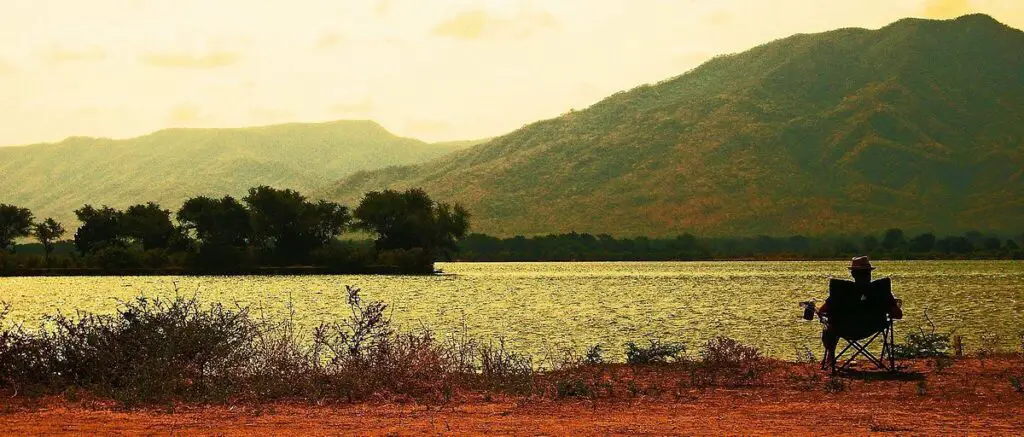
Situated along the Zambezi River in northern Zimbabwe, Mana Pools National Park is a haven of remarkable beauty and rich biodiversity. The park covers an area of approximately 2,196 square kilometers and has been recognized as a UNESCO World Heritage Site for its pure wilderness and abundance of wildlife.
Mana Pools is home to a wide variety of game, including elephants, lions, leopards, hyenas, and a significant population of African wild dogs. During the dry season, large herds of buffalo and elephant can be seen along the river banks. The park also hosts over 350 bird species, making it a paradise for birdwatchers.
The park’s name, “Mana,” means “Four” in Shona, referring to the four large permanent pools formed by the meandering Zambezi River. These pools are one of the main attractions of the park, attracting large numbers of wildlife, particularly in the dry season.
One unique feature of Mana Pools National Park is that visitors are allowed to get out of their vehicles and experience the African bush on foot. This offers a thrilling and intimate encounter with nature.
Accommodation in Mana Pools ranges from luxury safari lodges that offer fully catered, guided experiences, to self-catering lodges and campsites for those who prefer a more hands-on approach to their safari. Many of these lodges and campsites are located along the Zambezi River, offering breathtaking views and the chance to see wildlife up close.
The best time to visit Mana Pools National Park for wildlife viewing is during the dry season, from June to October. During these months, animals gather around the pools and the Zambezi River, making them easier to spot. However, the wet season (November to April) offers excellent birdwatching opportunities and lush, vibrant scenery.
The Park is actively involved in conservation efforts. The park’s management and various NGOs work together to protect the park’s ecosystems, including anti-poaching initiatives and programs aimed at conserving vulnerable species like the African wild dog.
A visit to Mana Pools National Park offers a truly wild and immersive safari experience. With its abundant wildlife, stunning landscapes, and unique opportunities for walking safaris, it’s a highlight of any trip to Zimbabwe.
Addo Elephant National Park, South Africa
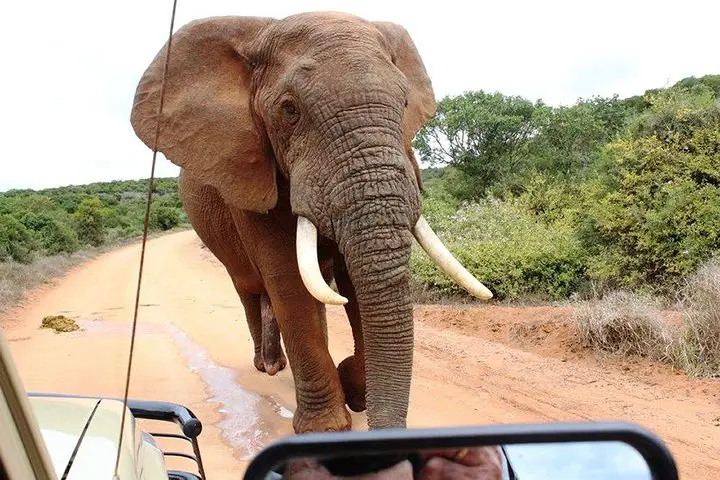
Located near Port Elizabeth in South Africa, Addo Elephant National Park is the third largest national park in the country. Spanning approximately 1,640 square kilometers, the park encompasses a wide range of landscapes, including arid semi-desert, fynbos vegetation, and a coastal belt.
As its name suggests, Addo Elephant National Park is famous for its elephant population — with over 600 resident elephants, it hosts one of the densest African elephant populations in the world. Apart from these gentle giants, the park is home to a variety of wildlife, including lions, buffalos, black rhinos, spotted hyenas, leopards, and a variety of antelope species.
The park is also unique in that it extends to the sea, encompassing the Bird and St. Croix Island groups, home to the world’s largest breeding populations of African penguins. This makes Addo one of the few places where you can see the “Big Seven” — elephant, rhino, lion, buffalo, leopard, southern right whale, and great white shark.
Addo Elephant National Park offers a range of accommodations to suit various budgets and preferences. Options include luxury lodges, tented camps, guest houses, and campsites. Most of these accommodations are located within the park, allowing guests easy access to game drives and other park activities.
Wildlife viewing in Addo Elephant National Park is good all year round. However, the drier months (June to September) are often considered the best time to visit, as animals tend to congregate around water sources, making them easier to spot. The summer months (October to March) can be hot but offer spectacular bird watching, as migrant species are present.
Addo Elephant National Park has a successful conservation history. Originally created to protect 11 elephants in 1931, the park now protects more than 600. In addition to its elephant conservation efforts, the park is involved in preserving the unique biodiversity of the Eastern Cape region, including protecting the marine life of the Bird and St. Croix islands.
Addo Elephant National Park provides a unique and diverse safari experience. With its large elephant population, diverse range of habitats, and extensive conservation efforts, it is a must-visit destination for any wildlife enthusiast.
Ngorongoro Crater Conservation Area, Tanzania
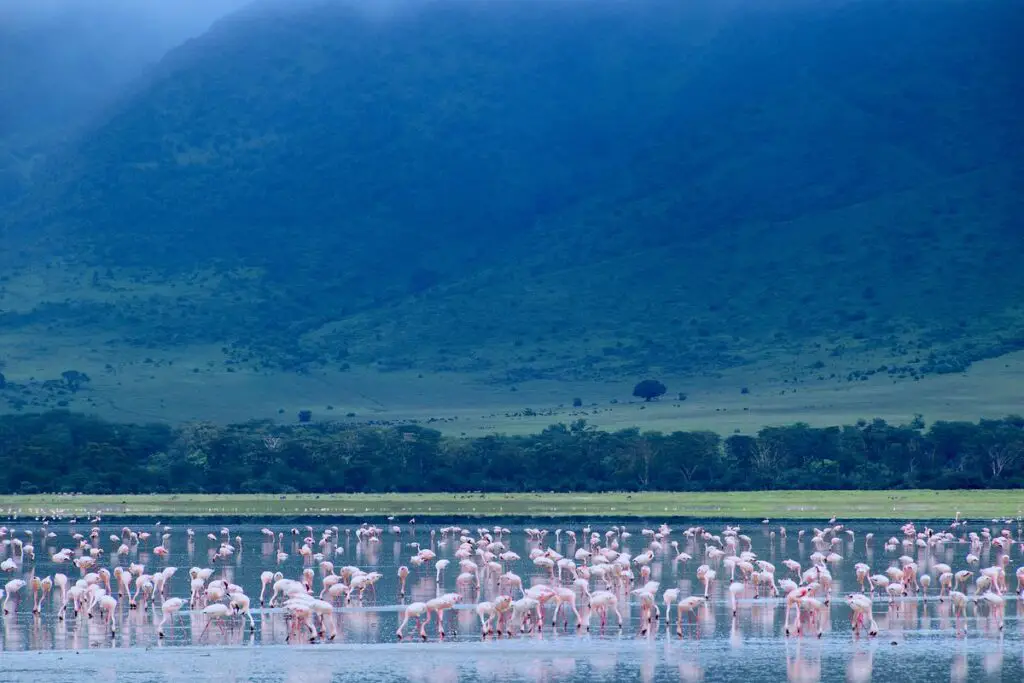
The Ngorongoro Crater Conservation Area in northern Tanzania is a UNESCO World Heritage Site that offers a unique and unforgettable safari experience. The area is renowned for the Ngorongoro Crater, the world’s largest inactive, intact, and unfilled volcanic caldera. This natural wonder is about 20km across, 600 meters deep, and 300 square kilometers in area.
The Ngorongoro Crater is often referred to as ‘Africa’s Eden’ or the ‘8th Wonder of the World’ due to its dense concentration of wildlife. The crater floor is home to about 25,000 large animals, including black rhinos, elephants, zebras, hippos, and the densest population of lions in the world. The crater’s lake, Lake Magadi, attracts large flocks of flamingos, creating a spectacular pink hue across the water.
Aside from the wildlife, the crater itself is a sight to behold. The dramatic cliffs enclosing the crater floor offer panoramic views that are simply breathtaking.
There is a variety of accommodation available around the Ngorongoro Crater, ranging from luxury lodges to tented camps and budget-friendly campsites. Many of these accommodations offer spectacular views of the crater and easy access to game drives.
Wildlife viewing in the Ngorongoro Crater is excellent all year round. However, to avoid the heavy rains, the best time to visit is during the dry season, from June to October. The short rainy season in November and December usually doesn’t affect wildlife viewing, and the park is less crowded during these months.
The Ngorongoro Conservation Area is unique in that it is a conservation area, not a national park. This means that the Maasai people, who are indigenous to this area, live and coexist with the wildlife. Conservation efforts in the area aim to balance the needs of wildlife and people.
The Ngorongoro Conservation Area Authority manages these efforts, working to prevent poaching, manage tourism responsibly, and ensure the sustainability of the area’s natural and cultural resources.
The Ngorongoro Crater Conservation Area provides an extraordinary safari experience. Its abundant wildlife, stunning landscapes, and unique coexistence of humans and animals make it a must-see destination for any safari-goer.
Chobe National Park, Botswana
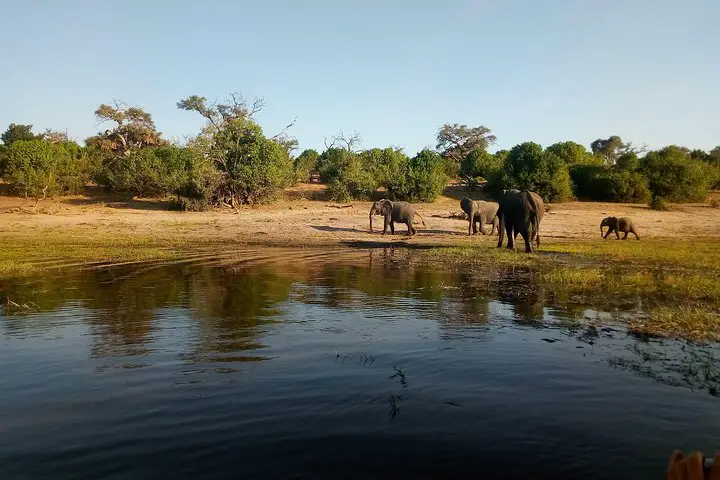
Located in the northeastern corner of Botswana, Chobe National Park is one of the most biologically diverse parks in the country. It covers approximately 11,700 square kilometers and is known for its spectacular elephant population.
Chobe National Park is home to the largest concentration of elephants in Africa, with an estimated population of around 120,000. This is one of the park’s main attractions, with visitors often witnessing large herds of elephants, particularly along the Chobe River.
In addition to elephants, Chobe National Park boasts a rich variety of wildlife, including lions, leopards, African wild dogs, and many species of antelope. The park is also renowned for its birdlife, with over 450 species recorded.
The park is divided into different ecosystems: the Serondela area or Chobe riverfront, the Savuti Marsh area, the Linyanti Marsh, and the dry hinterland. Each of these areas offers unique wildlife viewing experiences.
Chobe National Park offers a range of accommodation options, from luxury lodges and safari camps to budget-friendly campsites. Many of the lodges offer comprehensive packages that include accommodation, meals, and game drives or boat cruises on the Chobe River.
The best time to visit Chobe National Park for wildlife viewing is during the dry season, from May to October. During this time, animals congregate around the Chobe River and other water sources, making them easier to spot. However, the wet season (November to April) brings lush landscapes and excellent birdwatching opportunities, with migratory birds in abundance.
Chobe National Park has a crucial role in conservation. The Botswana government has implemented strict anti-poaching measures and has a commitment to low-impact tourism. The park is also part of the Kavango-Zambezi Transfrontier Conservation Area, a region aiming to create a vast network of protected land for wildlife to roam freely.
In conclusion, Chobe National Park offers an exceptional safari experience. Its impressive elephant population, diverse ecosystems, and commitment to conservation make it a top choice for any wildlife enthusiast.
Amboseli National Park, Kenya

Located in southern Kenya, Amboseli National Park is renowned for its spectacular views of Mount Kilimanjaro, Africa’s highest peak, which lies just across the border in Tanzania. Covering an area of 392 square kilometers, Amboseli is a mix of swampy deltas, plains, woodlands, and a dried-up lake bed.
Amboseli National Park is home to a diverse array of wildlife. It’s particularly known for its large herds of elephants, and the park’s research project, the Amboseli Elephant Research Project, is the longest-running study of wild elephants in the world.
Aside from elephants, visitors can spot lions, cheetahs, hyenas, giraffes, zebras, and over 600 species of birds. The park’s wetlands and swamps, fed by underground rivers from Mount Kilimanjaro’s melting snowcap, attract hippos and a variety of water birds, including pelicans and kingfishers.
The most notable feature of Amboseli is the majestic backdrop of Mount Kilimanjaro, which provides an unparalleled setting for wildlife viewing and photography.
There are several lodges, luxury tented camps, and budget camping sites within and around Amboseli National Park, catering to a wide range of preferences and budgets. Many of these accommodations offer stunning views of Mount Kilimanjaro and easy access to game drives in the park.
The best time to visit Amboseli National Park for wildlife viewing is during the dry seasons, from June to October and January to February. During these times, the vegetation is less, and animals congregate around water sources. The wet seasons (November to December and March to May) bring new life to the park, with lush vegetation and plenty of birdlife.
Amboseli National Park is involved in several conservation projects, including the Amboseli Elephant Research Project, which has provided critical insights into elephant behavior, communication, and social structure. The park works closely with the local Maasai community on conservation efforts, recognizing their role as key stakeholders in wildlife conservation.
Overall, Amboseli National Park offers a unique and rewarding safari experience. With its impressive wildlife, stunning landscapes dominated by Mount Kilimanjaro, and ongoing conservation efforts, it is a must-visit destination in Kenya.
Queen Elizabeth National Park, Uganda
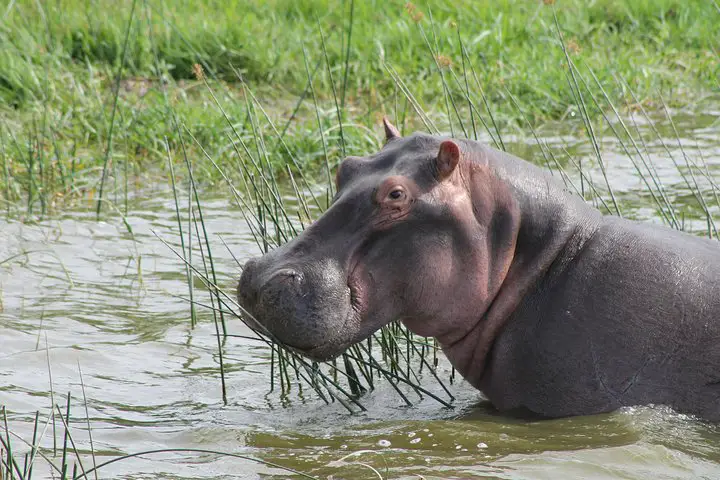
Situated in western Uganda, Queen Elizabeth National Park spans the equator line and encompasses savannah, humid forests, sparkling lakes, and fertile wetlands. It’s one of Uganda’s oldest and most popular national parks, covering around 1,978 square kilometers.
Queen Elizabeth National Park is home to an impressive 95 species of mammals, including elephants, hippos, lions, and leopards, as well as an astonishing 600 species of birds. The park is also known for its tree-climbing lions found in the Ishasha sector, a relatively unique behavior as most lions do not climb trees.
Another major attraction is the Kazinga Channel, a 32-kilometer long natural channel linking Lake Edward and Lake George. The channel is a dominant feature of the park and attracts a varied range of animals and birds, with one of the world’s largest concentrations of hippos and numerous Nile crocodiles.
Accommodation in Queen Elizabeth National Park caters to all budgets, with options ranging from luxury lodges and tented camps to budget guest houses and campsites. Many accommodations are located with views of the Kazinga Channel or overlooking the vast savannah, allowing guests to enjoy the scenic beauty and wildlife of the park.
The park is open all year round, but the best time for wildlife viewing is during the dry seasons, from June to August and December to February. These are the typical peak seasons for Uganda safaris. During these periods, wildlife is concentrated around water sources, making it easier to spot.
Queen Elizabeth National Park is heavily involved in the conservation of its diverse ecosystems and works to maintain the balance between wildlife and the surrounding local communities. Conservation efforts include anti-poaching patrols, habitat management, and community education and outreach to promote wildlife conservation.
Queen Elizabeth National Park is a highlight of any Ugandan safari. The park’s diverse ecosystems, abundant wildlife, stunning landscapes, and commitment to conservation make it a memorable destination for any nature and wildlife enthusiast.
Tsavo National Parks, Kenya
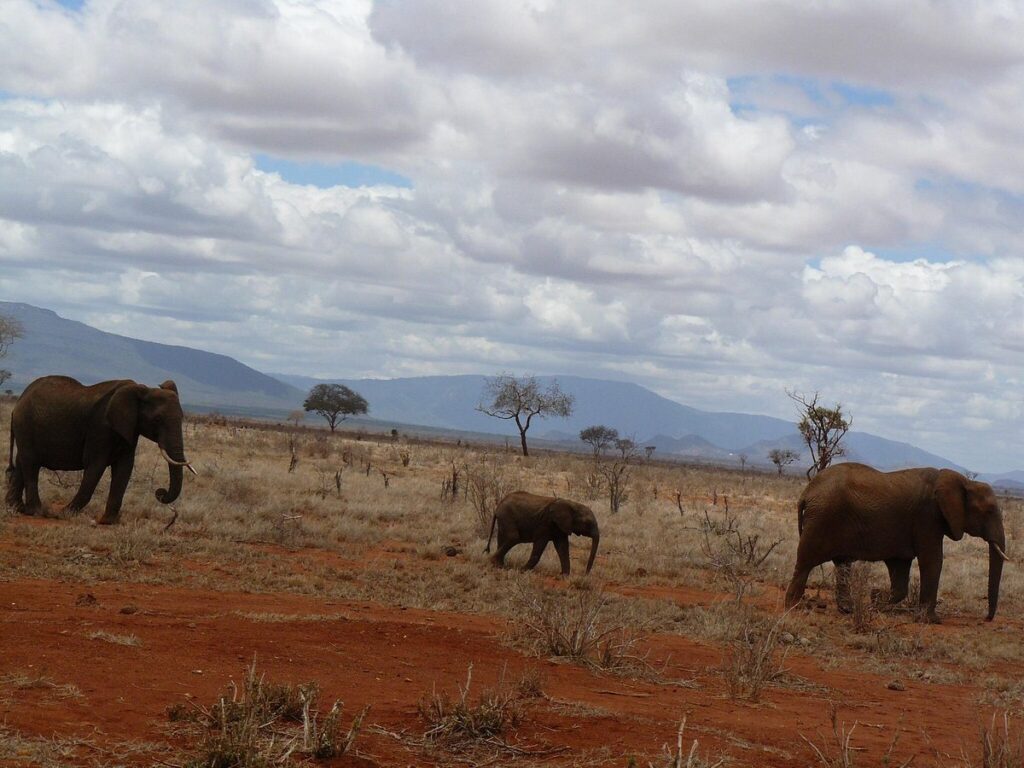
Tsavo, located in southeastern Kenya, is one of the oldest and largest national parks in the country, covering about 4% of Kenya’s total land area. It’s split into two separate parks, Tsavo East National Park and Tsavo West National Park.
Tsavo East National Park
Tsavo East is known for its stunning landscapes that include the Yatta Plateau, one of the world’s largest lava flows, the Galana River, and the Mudanda Rock. The park’s vast open spaces and diverse wildlife make it a great place for game viewing.
Elephants in Tsavo East are known for their striking red color, caused by the red dust they bathe in. Other wildlife includes lions, leopards, cheetahs, zebras, giraffes, and over 500 bird species.
Tsavo West National Park
Tsavo West is more mountainous and wetter than its counterpart, with swamps, lakes, and springs. It’s known for its diverse landscapes, including the scenic Mzima Springs, where hippos and crocodiles can be observed from an underwater viewing chamber.
The park is home to elephants, lions, leopards, rhinos, buffalos – making up the “Big Five” – and a wide variety of birdlife.
Both Tsavo East and Tsavo West offer a range of accommodation options, from luxury lodges to budget campsites. Many lodges and camps offer spectacular views over the park’s landscapes and provide guided game drives.
The dry season, from June to October and January to February, is the best time for wildlife viewing in both Tsavo parks. The wildlife is easier to spot as the vegetation is sparse and animals gather around water sources.
Tsavo’s conservation efforts are primarily aimed at protecting and preserving its diverse ecosystems, countering poaching, and managing human-wildlife conflict. The Tsavo Trust is a key organization involved in these efforts, working closely with the Kenya Wildlife Service.
Tsavo National Parks offer a truly authentic and diverse safari experience. The parks’ vast landscapes, abundant wildlife, and dedicated conservation efforts ensure a memorable adventure for any visitor.

